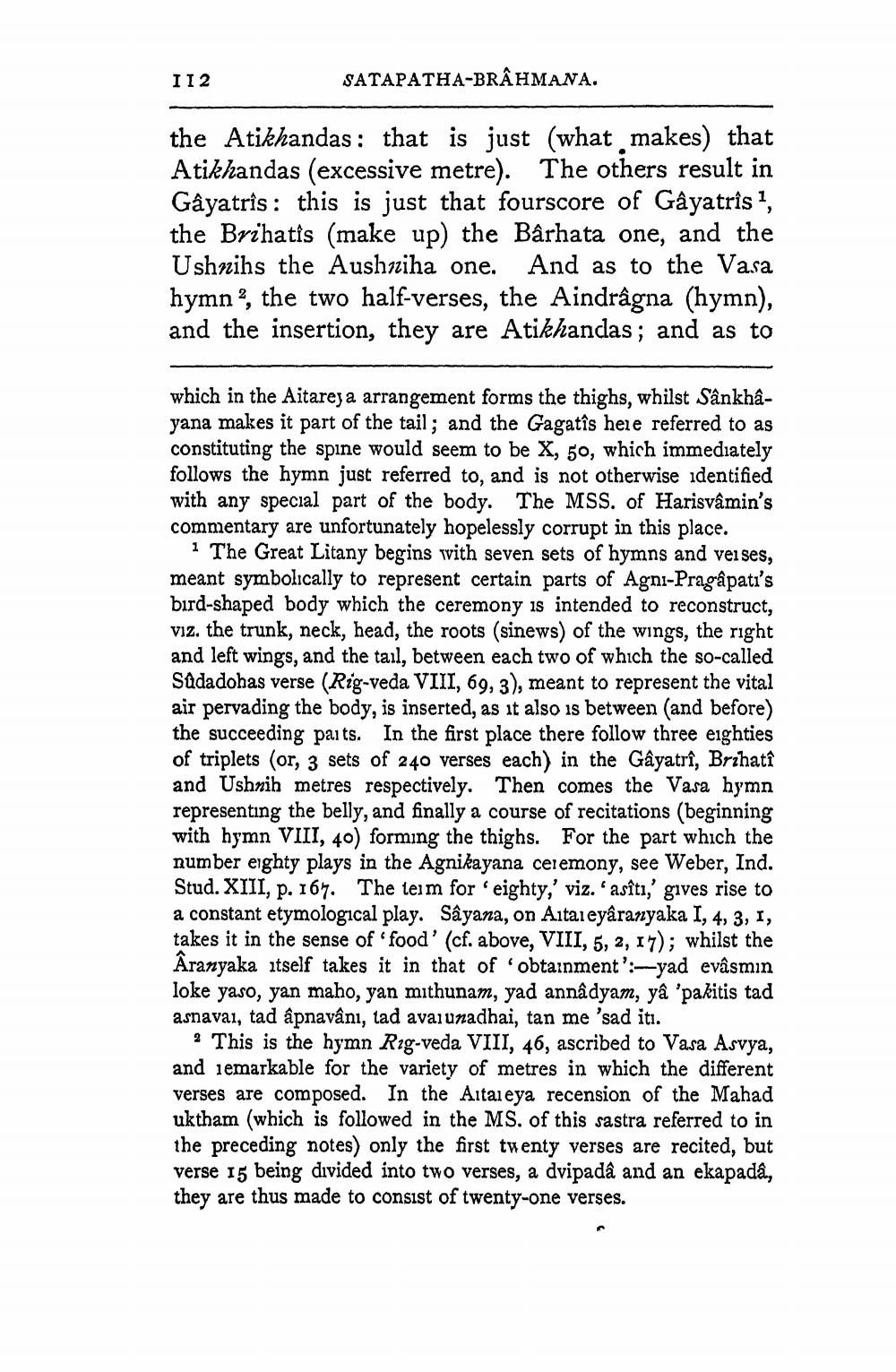________________
SATAPATHA-BRAHMANA.
the Atikhandas: that is just (what makes) that Atikhandas (excessive metre). The others result in Gâyatris: this is just that fourscore of Gâyatris1, the Brihatis (make up) the Bârhata one, and the Ushnihs the Aushiha one. And as to the Vasa hymn, the two half-verses, the Aindrâgna (hymn), and the insertion, they are Atikhandas; and as to
I 12
which in the Aitareya arrangement forms the thighs, whilst Sânkhâyana makes it part of the tail; and the Gagatîs hele referred to as constituting the spine would seem to be X, 50, which immediately follows the hymn just referred to, and is not otherwise identified with any special part of the body. The MSS. of Harisvâmin's commentary are unfortunately hopelessly corrupt in this place.
1 The Great Litany begins with seven sets of hymns and veises, meant symbolically to represent certain parts of Agni-Pragâpati's bird-shaped body which the ceremony is intended to reconstruct, viz. the trunk, neck, head, the roots (sinews) of the wings, the right and left wings, and the tail, between each two of which the so-called Sudadohas verse (Rig-veda VIII, 69, 3), meant to represent the vital air pervading the body, is inserted, as it also is between (and before) the succeeding parts. In the first place there follow three eighties of triplets (or, 3 sets of 240 verses each) in the Gâyatrî, Brzhatî and Ushnih metres respectively. Then comes the Vasa hymn representing the belly, and finally a course of recitations (beginning with hymn VIII, 40) forming the thighs. For the part which the number eighty plays in the Agnikayana ceremony, see Weber, Ind. Stud. XIII, p. 167. The term for eighty,' viz. ' asîti,' gives rise to a constant etymological play. Sâyana, on Aitai eyâranyaka I, 4, 3, 1, takes it in the sense of 'food' (cf. above, VIII, 5, 2, 17); whilst the Âranyaka itself takes it in that of obtainment':-yad evâsmın loke yaso, yan maho, yan mithunam, yad annâdyam, yâ 'pakitis tad asnavai, tad apnavâni, tad avai unadhai, tan me 'sad iti.
2 This is the hymn Rig-veda VIII, 46, ascribed to Vasa Asvya, and remarkable for the variety of metres in which the different verses are composed. In the Aitaleya recension of the Mahad uktham (which is followed in the MS. of this sastra referred to in the preceding notes) only the first twenty verses are recited, but verse 15 being divided into two verses, a dvipadâ and an ekapada, they are thus made to consist of twenty-one verses.




